Switzerland is famous for its stunning natural beauty, and there’s no better way to experience it than by exploring the countless hiking trails. Whether you prefer alpine peaks, scenic lakes, or peaceful valleys, knowing the best time to visit Switzerland for hiking will help you plan an unforgettable adventure. This guide breaks down what each season offers, top trails, useful tips, and the best events for nature explorers.
Why Switzerland is a Hiker’s Paradise
From the towering Alps to serene countryside paths, Switzerland offers an incredibly diverse range of hiking experiences. You’ll enjoy well-marked trails, breathtaking views, clean air, and a reliable public transportation system that makes reaching trailheads easy.
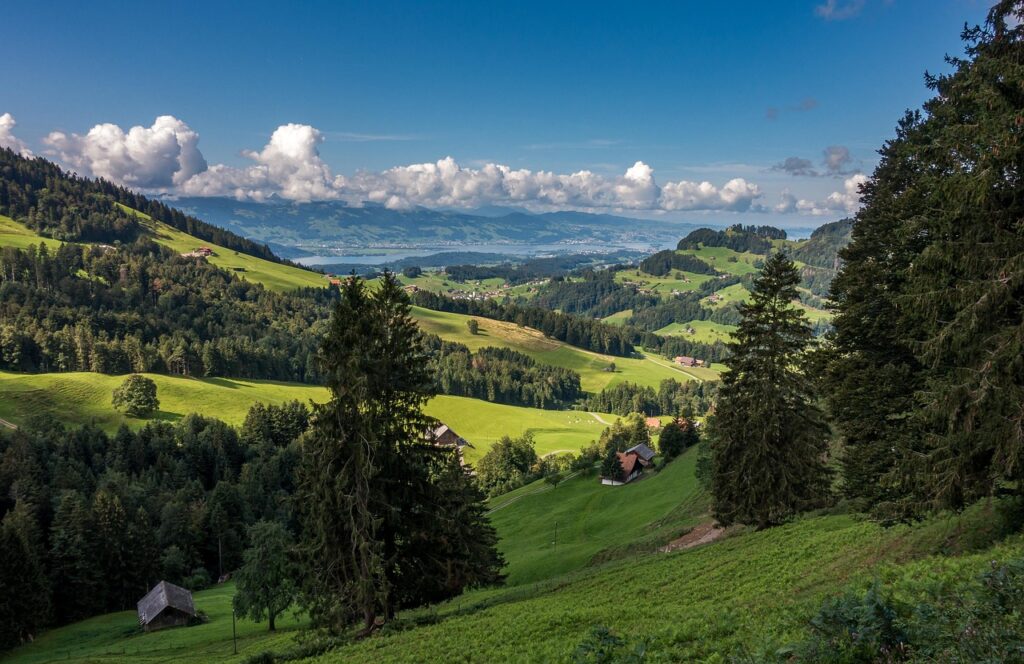
Whether you are a beginner or an experienced hiker, Switzerland provides an adventure for every level. The best time to visit Switzerland for hiking depends on what you want to experience—lush meadows, snow-capped peaks, or colorful autumn forests.
Hiking in Switzerland by Season
Spring (March – May)
What to Expect: Spring is a peaceful season with blooming flowers, melting snow, and fresh greenery. The days get longer, temperatures rise, and nature transforms beautifully. It’s a quieter time to visit, ideal for relaxing outdoor walks, scenic views, and enjoying Switzerland’s natural beauty without crowds.
Where to Hike: Explore scenic spring hikes in Switzerland at lower altitudes, like Lake Lucerne’s gentle trails, the rolling Jura Mountains, or the famous Lavaux Vineyards. These places offer lovely views, comfortable paths, and blooming landscapes, making them perfect for early-season outdoor adventures.
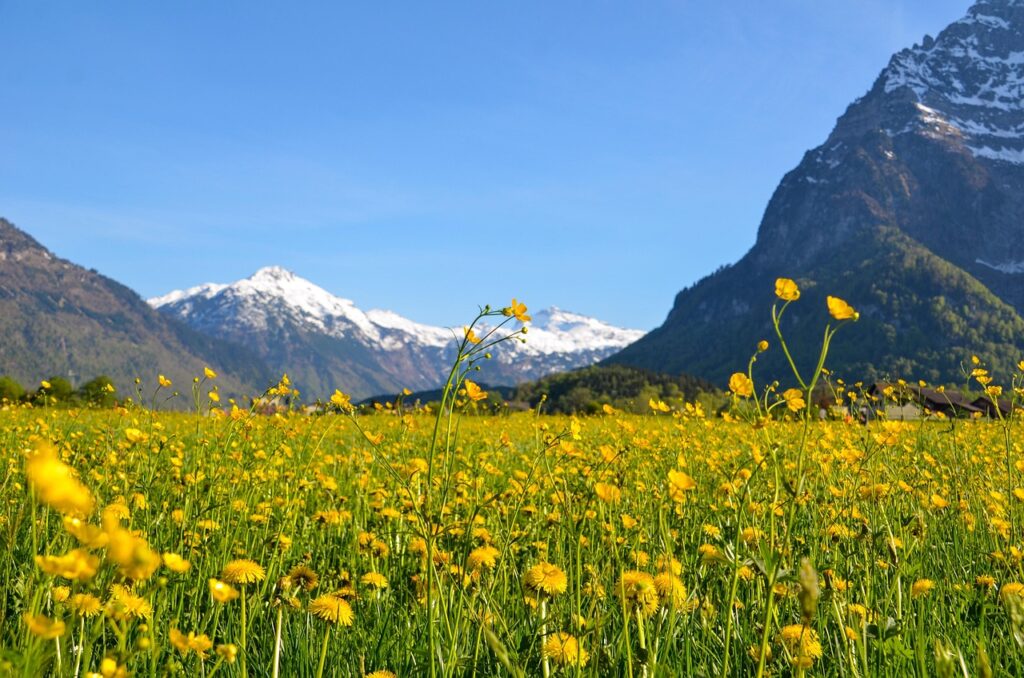
Pros: Spring hiking offers tranquility, lower prices, and fresh natural scenery. Trails are less crowded, wildflowers are everywhere, and charming towns are easy to explore. It’s also great for nature photography, with waterfalls at their strongest from melting snow. Expect a peaceful and refreshing experience in Switzerland.
Cons: Some high-altitude trails remain closed, especially before June. Weather can be unpredictable with rain showers, and some mountain transport may not run. Hikers should check trail updates, choose accessible routes, and prepare for mixed conditions. Spring is less suited for alpine trekking but perfect for lowland adventures.
Summer (June – August)
What to Expect: Summer is the most popular season for hiking in Switzerland, offering warm weather, long daylight hours, and fully accessible high-altitude trails. The landscapes are alive with colorful wildflowers, green meadows, and crystal-clear alpine lakes. It’s the perfect time to experience Switzerland’s breathtaking mountain scenery at its best.
Where to Hike: Summer unlocks the best hiking destinations in Switzerland. Try the famous Five Lakes Trail in Zermatt for iconic Matterhorn views. Explore the Eiger Trail in Grindelwald for thrilling mountain paths. Don’t miss the Engadin Valley with its vast natural parks, scenic routes, and charming alpine villages.
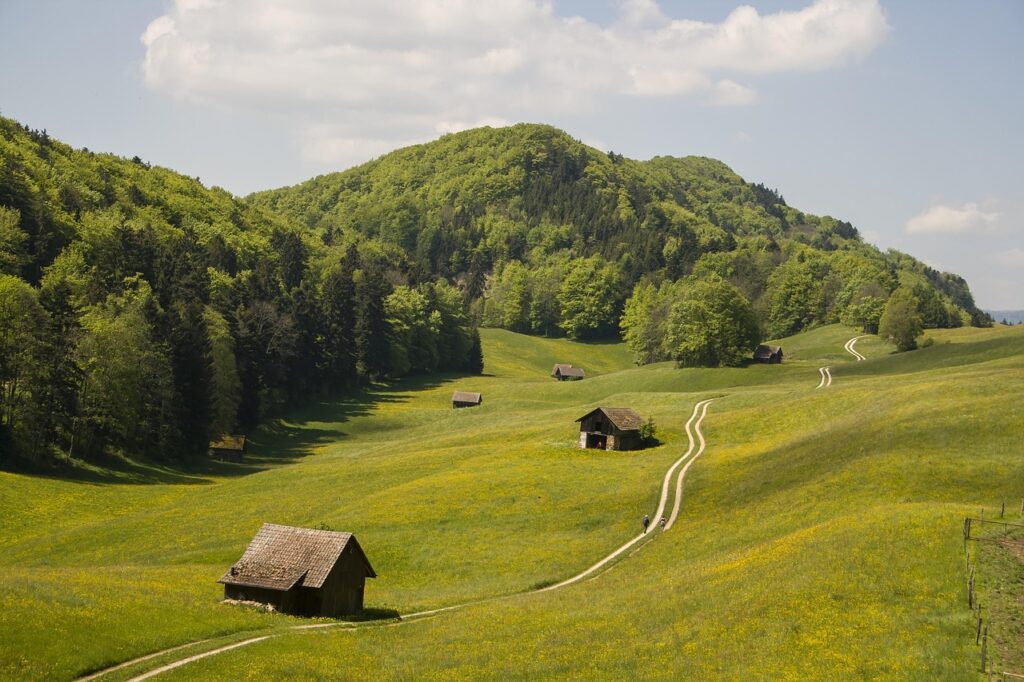
Pros: Mountain walking in summer offers ideal conditions, including stable weather, full trail access, and vibrant landscapes. Mountain transport systems operate at full capacity, making remote areas easily reachable. You can enjoy the best adventures, from challenging alpine routes to relaxing lakeside walks, especially during the best time to visit Switzerland for hiking, when the trails are at their most scenic.
Cons: Summer also comes with challenges like crowded trails, busy tourist hotspots, and higher accommodation prices. Popular routes can get very busy, especially around famous landmarks. You may need to book accommodation and transport in advance. Those seeking peaceful hikes should start early or choose lesser-known trails.
Autumn (September – November)
What to Expect: Autumn brings crisp air, fewer crowds, and golden scenery to Switzerland. The forests turn vibrant shades of red, orange, and yellow, creating unforgettable hiking landscapes. Trails are quieter, temperatures are pleasant, and it’s an ideal time for peaceful nature walks with spectacular views of the changing seasons.
Where to Hike: Autumn is perfect for scenic hikes in the Valais region, offering colorful vineyards and mountain panoramas. Creux du Van provides dramatic limestone cliffs surrounded by autumn forests. Oeschinensee features crystal-clear lake views framed by golden trees. These trails deliver unforgettable fall colors combined with peaceful, less-crowded hiking experiences.
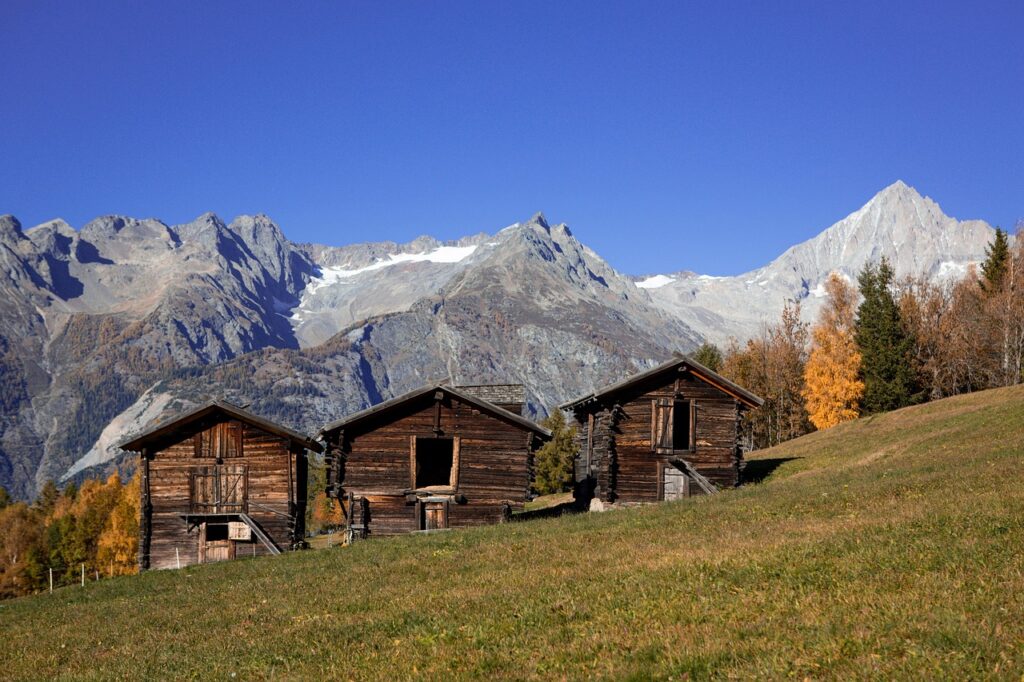
Pros: The benefits of autumn hiking include cooler, comfortable temperatures and stunning natural beauty. Tourist crowds thin out, allowing for more peaceful adventures. Accommodation prices drop, making trips more affordable. The colorful foliage creates incredible photo opportunities, and local harvest festivals add unique cultural experiences to your outdoor excursion.
Cons: Autumn’s downsides include shorter daylight hours, meaning you need to plan hikes earlier in the day. Temperatures can drop quickly, especially in the mornings and evenings. Some high-altitude routes may begin closing by October. Always check trail conditions beforehand and prepare for cooler, changeable weather during your hikes.
Winter (December – February)
What to Expect: Winter in Switzerland offers a serene, snow-covered landscape perfect for quiet walks and winter sports. Many outdoor paths close due to snow, but snowshoeing and winter hiking paths provide unique ways to explore frosty forests and frozen lakes, creating a magical alpine experience away from the crowds.
Where to Hike: Popular winter hiking spots include Davos, known for its snowshoe trails, Gstaad with gentle winter walks, and St. Moritz offering scenic snowy routes. These locations combine stunning winter scenery with well-maintained paths ideal for those seeking peaceful outdoor adventures amid snowy Swiss landscapes.
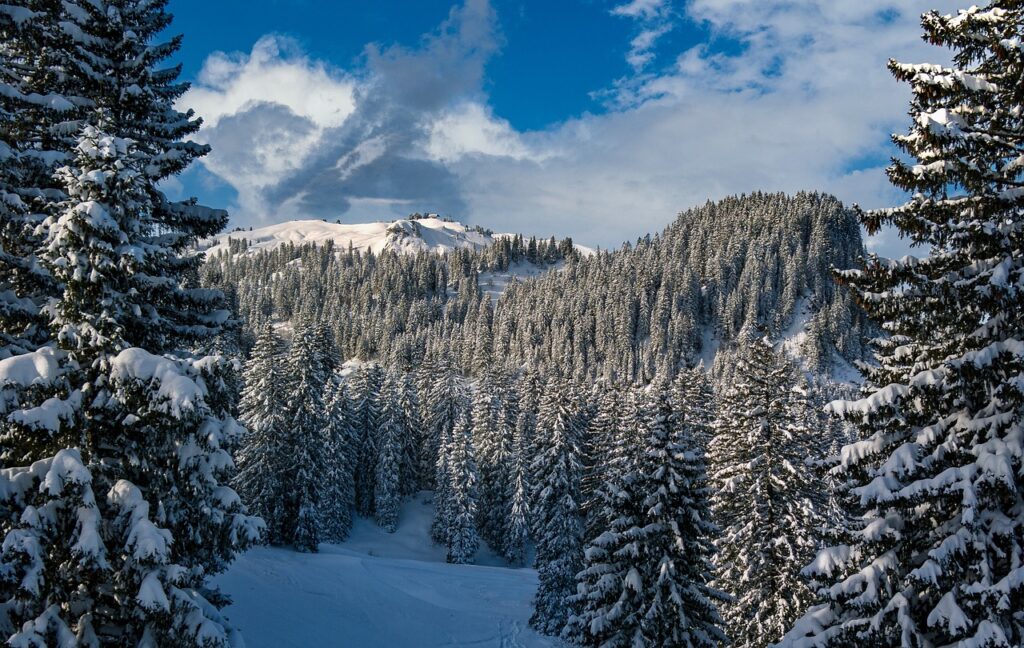
Pros: The main advantages are peaceful, crowd-free trails and beautiful snow-covered scenery. Winter hiking offers a chance to enjoy Switzerland’s alpine charm in a different season. It’s also perfect for snowshoeing enthusiasts and those wanting to combine outdoor excursions with other winter sports like skiing or sledding.
Cons: Many traditional hiking trails close during winter due to snow and ice, limiting options. Cold temperatures and shorter daylight hours require careful planning and proper gear. Accessibility can be an issue in remote areas, and some mountain transport services might not operate in harsh weather conditions.
Best Hiking Trails by Season
Spring: The Lavaux Vineyards Trail offers gentle walks through blossoming vineyards with stunning views of Lake Geneva. The Bisse de Savièse trail follows historic irrigation channels amid green valleys, perfect for enjoying Switzerland’s fresh spring scenery and mild weather while avoiding the crowds.
Summer: Summer highlights include the Five Lakes Trail in Zermatt, showcasing crystal-clear alpine lakes and panoramic mountain views. The Eiger Trail in Grindelwald provides thrilling paths beneath the famous Eiger North Face. The Engadin Valley features extensive trails surrounded by stunning high-altitude landscapes.
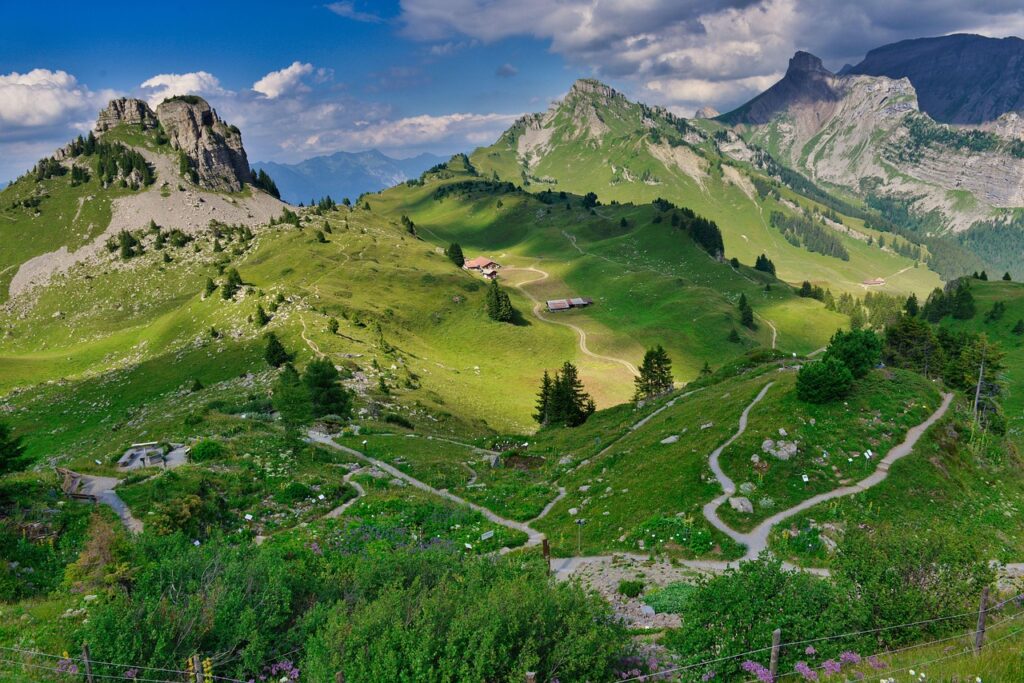
Autumn: In autumn, the Creux du Van Circular Trail reveals dramatic cliffs and vibrant fall foliage. The Aletsch Glacier Panorama Trail offers breathtaking views of Europe’s largest glacier framed by golden forests. These trails combine cooler weather with fewer tourists and spectacular seasonal colors.
Winter: Winter hiking includes snowshoe trails like Schatzalp in Davos, offering peaceful snowy forests and frozen lakes. The Winterwanderweg in Grindelwald provides safe, scenic routes perfect for crisp winter days. These trails allow hikers to experience Switzerland’s serene winter beauty safely.
Seasonal Festivals and Events for Hikers
Zermatt Folklore Festival (August): This lively festival celebrates alpine traditions with music, dancing, and colorful costumes. After a day of outdoor adventure in the nearby mountains, visitors can enjoy authentic Swiss culture, local food, and joyful festivities. It’s a perfect way to experience the region’s heritage and community spirit.
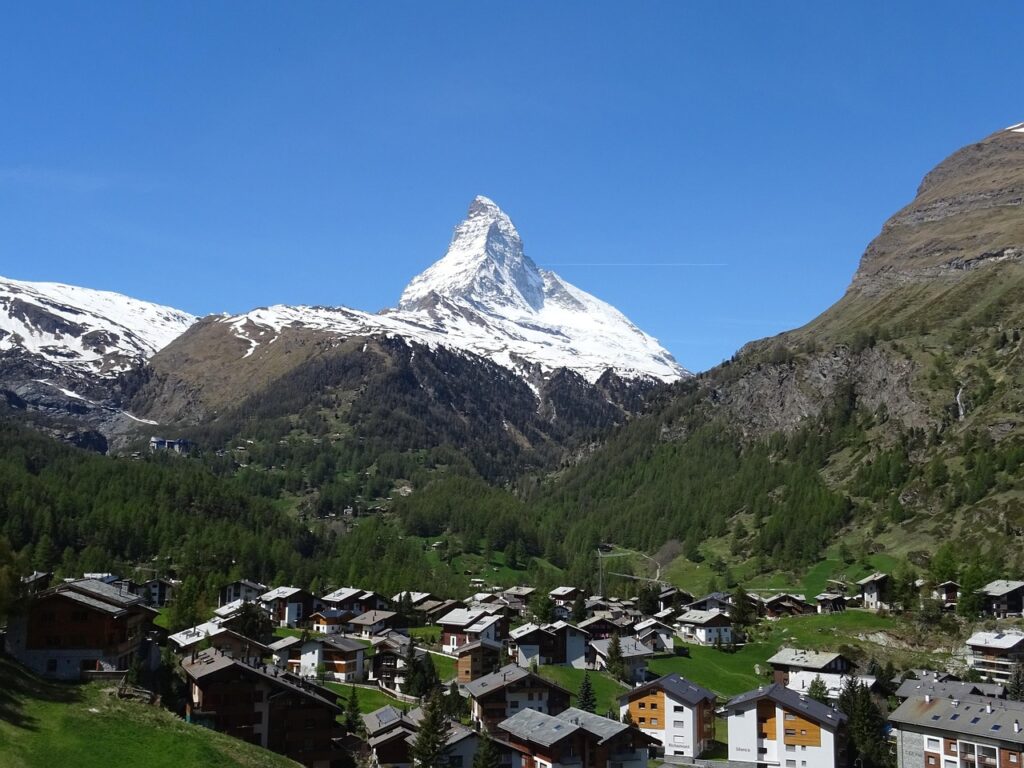
Alpine Descent Festivals (September): Held across various Swiss villages, these festivals mark the seasonal return of cattle from alpine pastures. Spectators can watch beautifully decorated cows parade through towns, accompanied by traditional music. It’s a unique cultural event that complements autumn hiking adventures with festive local flavor.
Engadin Summer Run (August): This popular mountain running event attracts athletes and spectators from around the world. Set in the stunning Engadin Valley, the run challenges participants with scenic routes at high altitudes. Even if you don’t run, the festival atmosphere and cheering crowds offer great energy for hikers nearby.
Practical Tips for Hiking in Switzerland
Pack Smart: Always dress in layers to adapt to changing mountain weather. Bring waterproof jackets, sturdy hiking boots, sun protection, and plenty of water. A small first-aid kit and snacks are essential for longer hikes.
Use Public Transport: Switzerland’s efficient train and bus system makes it easy to reach trailheads without a car. Consider purchasing a Swiss Travel Pass for unlimited travel and convenience during your hiking trip.
Navigation Tools: Use reliable apps like Komoot or Swiss Mobility to find trails and check conditions. Weather apps such as MeteoSwiss help you stay updated on sudden changes and plan your day safely.
Respect Nature: Stick to marked trails to protect fragile ecosystems. Carry out all trash, avoid disturbing wildlife, and follow local regulations to preserve Switzerland’s natural beauty for future hikers.
Conclusion
Switzerland offers breathtaking trail adventures year-round. The best time to visit Switzerland for hiking truly depends on your preferences—spring’s fresh blossoms, summer’s high-altitude excitement, autumn’s golden serenity, or the peaceful winter charm. Whenever you go, the Swiss trails promise unforgettable scenery and memorable experiences. Pack your hiking boots and get ready to discover the natural wonders of Switzerland.